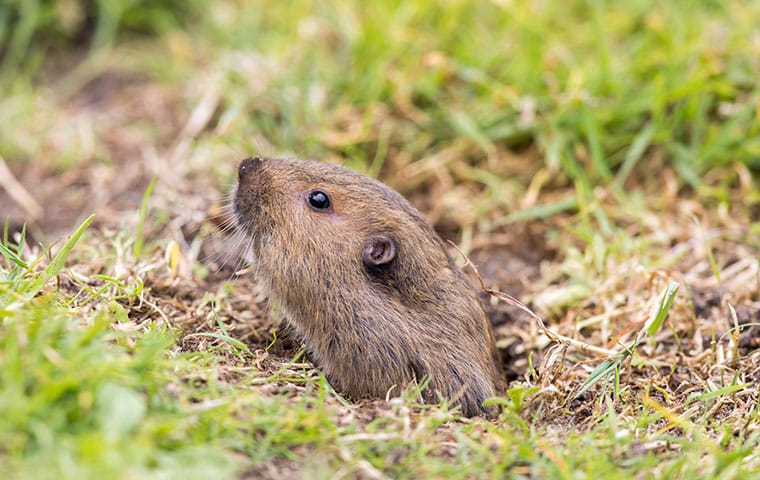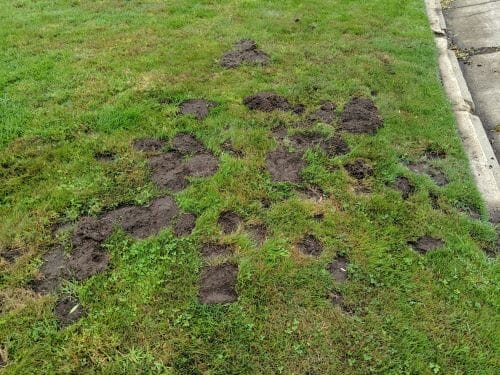Ultimate Parasite Control Solutions for Taking On Persistent Gopher Invasion Issues
In the realm of pest control, gophers present a distinct challenge due to their persistent nature and destructive routines. By exploring a comprehensive method that includes understanding gopher behavior, utilizing specialized capturing techniques, harnessing repellents, and adopting long-term prevention tactics, a course towards effective gopher management emerges.
Recognizing Gopher Behavior Patterns
Assessing gopher actions patterns provides useful insights into their habits and preferences, helping in the development of effective insect control approaches. Comprehending exactly how gophers behave is important in designing successful parasite administration strategies.
Gophers are tunneling rats known for their substantial tunneling activities. gopher exterminator. By observing their habits, researchers have uncovered that gophers are territorial creatures, with each gopher usually populating its very own passage system. These passage systems offer various purposes, including nesting, food storage space, and defense from predators
Furthermore, gophers display particular feeding patterns, liking origins, bulbs, and various other underground plant parts. By recognizing their nutritional choices, pest control professionals can purposefully lure traps or carry out repellents that target these food resources, efficiently minimizing gopher populations.
Additionally, gophers are most active throughout certain times of the day, normally very early morning and late afternoon. This understanding can help in organizing bug control tasks for maximum performance. In general, an extensive understanding of gopher behavior patterns is crucial for applying targeted and effective bug control steps.
Effective Trapping Methods
Understanding the most effective trapping strategies is crucial for efficiently managing gopher infestations and reducing damage to building. When taking care of gophers, traps are a humane and efficient approach for control. Among the most frequently made use of catches is package catch, which captures gophers active so they can be launched elsewhere. Positioning catches in active passages is vital for success. Recognize active tunnels by weighing down the ground; those fixed overnight are active. Establishing catches at passage entrances or in the major passage itself enhances the probability of catching gophers. It's essential to inspect traps often to make sure trapped gophers do not endure and to get rid of recorded gophers promptly. Furthermore, correctly keeping traps by cleansing and resetting them boosts their efficiency. When utilizing catches, perseverance is key as it might spend some time to catch all the gophers. By using these effective trapping techniques, homeowner can successfully handle gopher problems and protect their landscapes.
Making Use Of Deterrents and repellents
To enhance the effectiveness of capturing techniques in taking care of gopher infestations, building proprietors can discover the usage of repellents and deterrents as additional devices in their pest control toolbox. Deterrents, on the other hand, goal to make the environment less eye-catching to gophers by using vibrations or sound to replicate predators or produce disturbances that make the area unwelcoming for gophers. When incorporating repellents and deterrents right into a pest control strategy, it is necessary to comply with application guidelines very carefully and consistently reapply the items to preserve their performance in preventing gophers from causing damages to buildings.
Implementing Natural Control Methods

Gopher traps can be put strategically in energetic passages to capture and get rid of the parasites. These traps are a gentle means to manage gopher populaces without resorting to poison or damaging chemicals. By integrating these all-natural control approaches, it is possible to successfully handle consistent gopher invasions in an eco-friendly manner.
Incorporating Long-Term Avoidance Approaches
To establish lasting control over gopher problems, it is important to integrate aggressive actions that concentrate on avoiding future events. Applying long-lasting avoidance methods can considerably lower the likelihood of gopher re-infestations.
An additional essential element of long-term prevention is keeping a well-kept yard or yard. Gophers are attracted to areas with bountiful food resources like plants, origins, and light bulbs. By keeping greenery well-trimmed and removing excess debris, you can make your home much less enticing to gophers. Furthermore, practicing correct waste management by dealing with natural materials quickly can help discourage these bugs from settling on get more your land. By incorporating these positive measures right into your insect control method, you can develop an aggressive atmosphere for gophers, ultimately decreasing the chance of future invasions.

Conclusion
In conclusion, dealing with gopher problems requires a detailed method that integrates trapping methods, repellents, natural control techniques, and lasting avoidance methods. By understanding gopher habits patterns and making use of a combination of these solutions, house owners can successfully take care of relentless problems and avoid future events. It is necessary to regularly click to read more keep an eye on and maintain these bug control steps to make sure a gopher-free atmosphere.
By discovering an extensive approach that includes understanding gopher behavior, employing specialized trapping techniques, using repellents, and adopting long-term avoidance strategies, a course in the direction of efficient gopher monitoring emerges. By observing their behavior, researchers have discovered that gophers are territorial animals, with each gopher typically populating its very own tunnel system. It's vital to check catches regularly to guarantee trapped gophers do not suffer and to remove caught gophers promptly. Deterrents, on the other hand, goal to make the setting much less eye-catching to gophers by utilizing vibrations or sound to mimic predators or create disturbances that make the location inhospitable for gophers. Additionally, planting specific plant life that gophers dislike, such as castor bean plants or gopher spurge, can act as a deterrent.